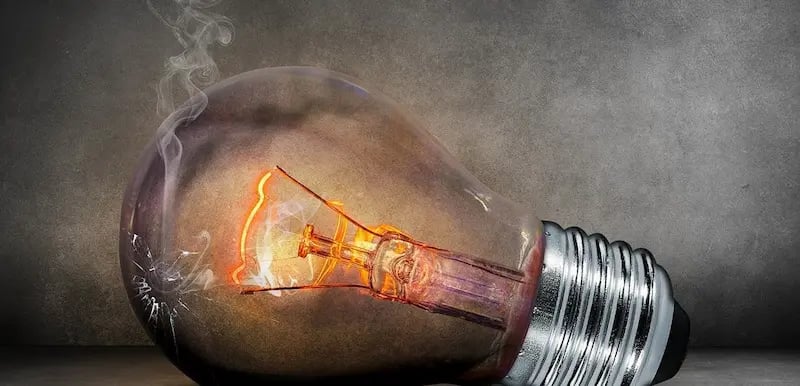Exus Blog Article
Lessons for the utilities sector about debt recovery best practice

Debt recovery in the utility sector has an image problem. There is considerable public concern across the globe about rising energy prices, with some governments stepping in to address the fuel poverty debate. As a result, utility companies receive little sympathy as they attempt to resolve unpaid energy bills.
All of this against a background where bad debt in the UK energy industry rose 60% in the five years to 2016, and a recent survey by Go Compare suggested that as many as 1.4 million people have utility bill debt. Elsewhere in Europe, an estimated 5.1 million Spaniards struggle to heat their homes in the winter months, with 4.2 million of them behind with their bills.
The nature of the utility market, coupled with behaviors associated with utility consumption, creates some unique challenges compared to other fields, such as retail banking. Despite this, many of the solutions to these challenges are closely aligned with practices honed in the banking sector.
Passive debt
Unlike purchasing a car on PCP or running up a credit card debt, building up utility arrears is a far more passive pursuit. Consumers take their utilities for granted and presume that their direct debit is doing the job. As a result, debt is often instigated by customer inaction, rather than customer activity.
Where customers do spot a debit balance, they may explain it away through seasonal consumption, hoping that their balance ‘catches up’ during the warmer months.
The key here is to identify these oblivious debtors at the earliest opportunity, while their debts are still small. This is particularly important in the UK, given the recent Ofgem ruling relating to back-billing, which prevents suppliers from recovering debt related to energy that was consumed more than 12 months prior.
Early risk detection via customer trend analysis can help avoid the costs associated with delinquent debt recovery and prevent nasty surprises for well-intentioned customers.
Head in the sand
As part of the announcement of the back-billing policy, Ofgem’s Rob Salter-Church asserted that “it’s unfair that customers should be left out of pocket when through no fault of their own they’re issued with a shock bill from their supplier.”
While a debate around debt ‘fault’ could fill many paragraphs, an example from the consumer rights pages of the Guardian highlighted the case of a customer whose direct debit increased overnight from £5 per month to £866 per month. While sympathetic, the journalist rightly asked why the customer thought that £5 per month was enough to cover their energy usage. The customer blamed paperless billing.
With increasing numbers of customers choosing to manage their energy accounts online, (led by attractive online-only tariffs and discounts for paper-free billing), direct interaction between customer and supplier is becoming rarer. This creates a paradox. Despite it being simpler than ever for a customer to monitor their energy consumption online, the lack of a bill through their front door makes the issue easier to ignore.
In the case of the Guardian’s underpayer, a physical bill may have prompted a call to customer services. In lieu of this, suppliers need to find other ways to keep in contact with their customers, such as automated text messages or emails. In this way, debts become more difficult to ignore and suppliers have an increased opportunity to cultivate relationships with their customers.
Pursue new
Growing competition in the energy market, fuelled in part by an increasing number of small local suppliers, has made the search for customers more urgent. Increased price competition has even resulted in the UK government encouraging customers to switch suppliers, while the Australian Government has threatened to legislate if switching is not made easier.
Suppliers have therefore taken on customers who would normally be regarded as financially high-risk to boost market share. In the UK, the situation has been exacerbated by Ofgem guidance which allows customers to switch suppliers while in debt (albeit if those debts are less than 28 days old), as well as issues with tracking customers who have moved house and inherited a supplier at their new property.
The key to mitigating these issues is to streamline early credit risk detection and reduce the overheads associated with delinquent account management activity.
Once a debt has been identified, even being able to reach the customer to discuss it can be problematic. To address this, retail banks have taken to offering online self-service tools to customers in debt.
Reduce the pressure
Indebted customers can often be put off contacting their supplier because of embarrassment and a fear of being pressured into making unaffordable repayments. This is borne out by the Go Compare survey, which highlighted that only 11% of respondents who were in debt had contacted their supplier to discuss repayment options.
By offering an online service that can be accessed 24/7, customers can assess options available to them without the perceived pressure of discussing them with an agent. Putting power back into customers’ hands will ultimately improve their debt collection experience – which is significant, given that just 21% of respondents to the Go Compare survey felt their supplier had been helpful regarding their last debt case. Importantly, this also cuts per-customer operational costs associated with delinquent portfolios.
Ultimately, utility companies need to identify and treat credit risk early and open up a wide range of customer communication channels. With the right software and automation, these communication activities do not need to increase overheads. By making sure that subsequent collection activities are efficient - in part by empowering the customer to make the right choices - utility companies can rehabilitate delinquent customers to encourage their loyalty. Cutting write-off and debt-sale volumes, these loyal, debt-free customers will, in turn, also have higher lifetime value and bring down acquisition costs. Everybody wins.
